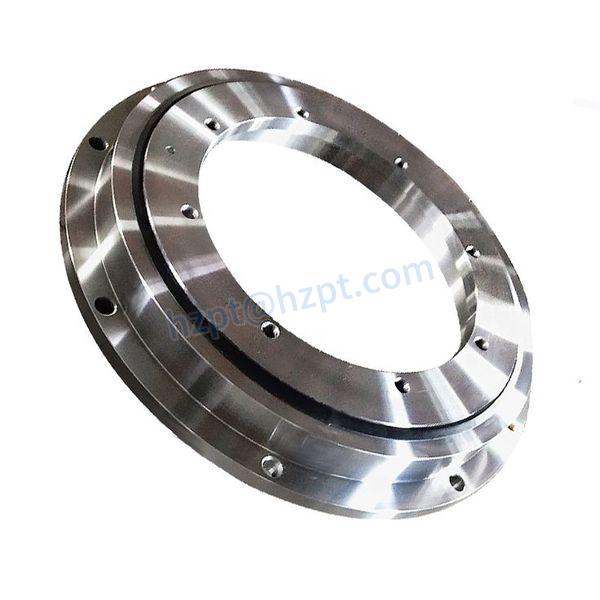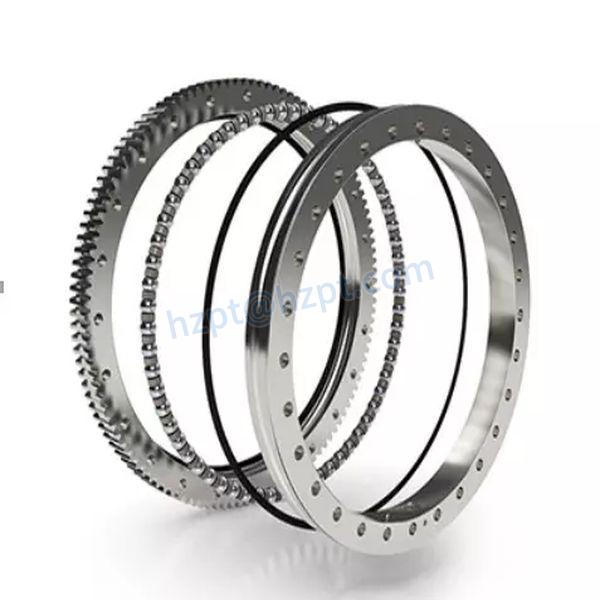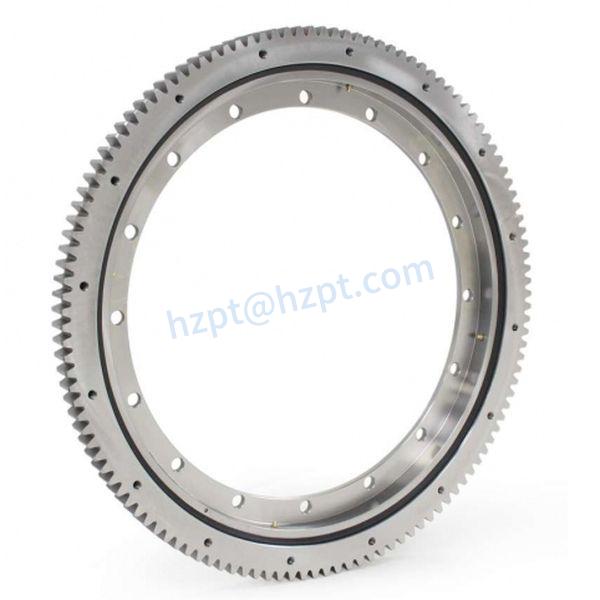Product Description
Large Non-Standard Customized Marine Crane Slewing Bearing Without Gear Introduction:
large non-standard customized slewing bearings without gears are essential components in heavy-duty industrial machinery and equipment, providing reliable rotational support for various applications across multiple industries.
Large Non-Standard Customized Marine Crane Slewing Bearing Without Gear key features:
-
Customization: These slewing bearings are tailored to meet specific design requirements, including size, load capacity, mounting arrangements, and environmental conditions. This customization ensures compatibility with the intended application and seamless integration into the equipment.
-
High Load Capacity: Large non-standard slewing bearings are engineered to support exceptionally heavy loads while maintaining stability and smooth rotation. They are constructed using high-strength materials and advanced manufacturing techniques to withstand the rigors of industrial operations.
-
Precision Engineering: These bearings are manufactured with precision machining and assembly processes to achieve tight tolerances and ensure smooth, reliable rotation. This precision engineering minimizes friction and wear, resulting in extended service life and reduced maintenance requirements.
-
Corrosion Resistance: Depending on the application requirements, large non-standard slewing bearings can be treated with corrosion-resistant coatings or made from stainless steel to withstand harsh operating environments, including exposure to moisture, chemicals, and contaminants.
Large Non-Standard Customized Marine Crane Slewing Bearing Without Gear Display:
/* January 22, 2571 19:08:37 */!function(){function s(e,r){var a,o={};try{e&&e.split(“,”).forEach(function(e,t){e&&(a=e.match(/(.*?):(.*)$/))&&1
| Standard or Nonstandard: | Standard |
|---|---|
| Feature: | Corrosion-Resistant |
| Sealing Gland: | Sealed On Both Sides |
| Rolling-Element Number: | Single-Row |
| Roller Type: | Straight Raceway |
| Material: | Bearing Steel |
| Samples: |
US$ 10/Piece
1 Piece(Min.Order) | |
|---|
| Customization: |
Available
| Customized Request |
|---|

What is the Typical Lifespan of Slewing Bearings under Different Operating Conditions?
The lifespan of slewing bearings can vary based on different operating conditions and factors that influence wear and fatigue. Here’s a general overview of the typical lifespan under various scenarios:
- Light Loads and Proper Lubrication:
When operating under light axial, radial, and moment loads and with consistent and proper lubrication, slewing bearings can often exceed 20,000 to 30,000 hours of service life.
- Heavy Loads and Harsh Environments:
In heavy-duty applications where the bearings handle substantial loads, such as construction equipment or mining machinery, the lifespan might range from 10,000 to 20,000 hours. Harsh environments with dust, moisture, and corrosive substances can affect the bearing’s durability.
- Corrosive Environments:
In environments with high levels of corrosion, such as marine applications, the lifespan of slewing bearings might be reduced due to the impact of corrosive elements on the bearing’s materials.
- High-Speed Applications:
In applications requiring high rotational speeds, such as certain automation systems or machinery, the bearing’s lifespan might be affected due to increased friction and wear associated with higher speeds.
- Poor Lubrication and Maintenance:
If proper lubrication and maintenance practices are neglected, the bearing’s lifespan can be significantly shortened. Insufficient lubrication leads to increased friction and wear, potentially reducing the lifespan by a considerable margin.
- Shock and Impact Loads:
Applications subject to frequent shock and impact loads, like certain material handling equipment, can experience premature wear and fatigue, leading to a reduced lifespan.
- Temperature Extremes:
Operating in extreme temperatures, whether high or low, can affect the performance of slewing bearings and potentially reduce their lifespan due to changes in material properties and lubrication effectiveness.
- Customization and Quality:
The quality of the bearing, manufacturing processes, and the extent of customization also play a role. High-quality bearings designed for specific applications might offer longer lifespans.
- Manufacturer’s Recommendations:
Always refer to the manufacturer’s guidelines and recommendations for the specific slewing bearing model. They provide valuable insights into maintenance intervals, lubrication, and expected service life.
It’s important to note that these are general estimates, and actual lifespans can vary depending on numerous factors. Regular maintenance, proper lubrication, adherence to guidelines, and consideration of operating conditions are essential for maximizing the lifespan of slewing bearings.

What are the Signs of a Damaged or Worn-out Slewing Bearing that Requires Replacement?
Identifying the signs of a damaged or worn-out slewing bearing is essential for preventing potential failures and ensuring equipment reliability. Here are common indicators that a slewing bearing may require replacement:
- Unusual Noise:
If you notice grinding, clicking, or any abnormal noises during operation, it could be a sign of wear or misalignment in the slewing bearing.
- Increased Vibration:
Excessive vibration or shaking during rotation could indicate misalignment, damage, or uneven wear in the slewing bearing.
- Irregular Movement:
If the machinery exhibits irregular or jerky movement instead of smooth rotation, it might be due to a damaged slewing bearing.
- Uneven Load Distribution:
Uneven distribution of loads can lead to accelerated wear on specific sections of the bearing, causing premature failure.
- Abnormal Heat Generation:
If the slewing bearing becomes excessively hot during operation, it may suggest friction, misalignment, or lack of proper lubrication.
- Excessive Play or Clearance:
Too much axial or radial play in the bearing can indicate wear, misalignment, or component fatigue, requiring inspection and potential replacement.
- Leakage of Lubricant:
If lubricant leaks from the bearing or seals, it may signify damage to the sealing mechanism or an internal issue that needs attention.
- Visible Wear or Damage:
Inspect the bearing for visible signs of wear, corrosion, pitting, or other forms of damage. Cracks, dents, or deformation are clear indicators of potential problems.
- Reduced Performance:
If the machinery’s performance deteriorates, such as decreased rotation speed, reduced load capacity, or increased power consumption, it could be due to a failing slewing bearing.
- Increased Maintenance Frequency:
If you find yourself needing to perform more frequent maintenance or repairs on the bearing, it might indicate that the bearing is nearing the end of its service life.
- Manufacturer’s Service Life:
Consult the manufacturer’s guidelines for the expected service life of the slewing bearing. If the bearing is approaching this limit, it’s advisable to consider replacement.
If any of these signs are observed, it’s important to consult with experts and consider replacing the slewing bearing to prevent further damage and ensure the safe and efficient operation of machinery.

What is a Slewing Bearing and How Does It Work?
A slewing bearing, also known as a turntable bearing, is a specialized type of rolling-element bearing designed to handle axial, radial, and moment loads simultaneously. It allows rotational movement between two parts while supporting the loads applied to them. Slewing bearings are commonly used in various applications such as cranes, construction equipment, wind turbines, and industrial machinery.
At its core, a slewing bearing consists of multiple components, including an outer ring, an inner ring, rolling elements (balls or rollers), and in some designs, a gear or teeth arrangement. The outer ring is typically stationary and mounted to a fixed structure, while the inner ring is connected to the rotating part. The rolling elements provide smooth movement between the two rings, enabling rotation.
Slewing bearings work by minimizing friction and distributing loads effectively across the rolling elements. When a rotational force is applied to the inner ring, the rolling elements facilitate the smooth rotation of the inner ring relative to the outer ring. The rolling elements are positioned within raceways or grooves in the rings, ensuring proper contact and load distribution.
The addition of gears or teeth to the slewing bearing design enables the transmission of torque between the inner and outer rings. This feature is particularly useful when precise rotation control is required, as seen in applications like cranes and heavy machinery.
In summary, a slewing bearing functions as a rotational joint that can support various loads and movements. Its design, which includes rolling elements and optional gear systems, allows it to manage axial, radial, and moment loads while facilitating smooth rotation between connected parts.


editor by CX 2024-04-30
Leave a Reply